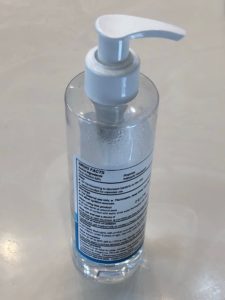Hand Sanitizer

 The use and acquisition of hand sanitizer has reached critical levels this year so much that it, at one point, could not be found in stores or warehouses anywhere in the US. Now, when you go into any commercial building you find gallon-size jugs and liter-size fixtures mounted to the wall everywhere you walk. What we do not realize is that these simple hand sanitizers are Class IB flammable liquids under NFPA 30, Flammable and Combustible Liquids Code. To determine the contents of a specific product, building owners and managers should read the Material Safety Data Sheets (MSDS) provided by the manufacturer.
The use and acquisition of hand sanitizer has reached critical levels this year so much that it, at one point, could not be found in stores or warehouses anywhere in the US. Now, when you go into any commercial building you find gallon-size jugs and liter-size fixtures mounted to the wall everywhere you walk. What we do not realize is that these simple hand sanitizers are Class IB flammable liquids under NFPA 30, Flammable and Combustible Liquids Code. To determine the contents of a specific product, building owners and managers should read the Material Safety Data Sheets (MSDS) provided by the manufacturer.
The International Fire Code has regulated these products for several years now and defines them as Alcohol-Based Hand Rubs (ABHR). IFC Chapter 57 of the 2018 edition addresses flammable liquids and section 5705.5 describes several requirements including:
- The maximum dispenser capacity is 68 ounces or 2 liters.
- Dispensers must be 48 inches apart from one another.
- Dispensers can only be installed above carpeted floors in sprinklered portions of a building.
Considerations for bulk storage of alcohol hand sanitizer depends upon the amount, storage configuration (pallets, racks, etc.), and product ingredients. If you have a mixture that is less than 20 percent alcohol, NFPA 13 (Standard for the Installation of Sprinkler Systems) contains all the requirements you need to follow. However, because hand sanitizer is required to have more than 60 percent alcohol in order to have disinfectant properties, you need to consult NFPA 30. The maximum allowable quantity (MAQ) is determined whether the product is within a flammable liquid storage cabinet and whether or not the building is sprinklered. MAQ is the number of hazardous materials that may be stored, used, or dispensed within a single control area. If you use a flammable liquids storage cabinet, then the MAQ increases 100 percent. The MAQ increases another 100 percent if the storage is in an area where sprinklers are installed. These increases are cumulative with each other as well, which means if you have a starting MAQ of 120 gallons of a Class IB liquid in a storage cabinet that is sprinkler protected, the MAQ increases to 480 gallons.
There are risks associated with using any type of chemical product, and those who choose to use such products should assume responsibility for understanding and following both manufacturers guidelines and the applicable fire codes. Both fire inspectors and sprinkler contractors should have a general understanding of ABHR in the commercial building to provide guidance to the building owner and manager and point out the benefits of fire sprinklers.
